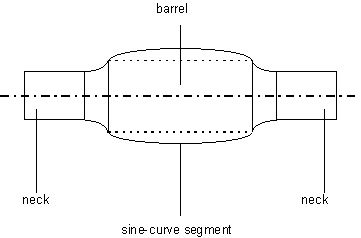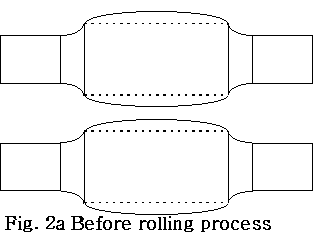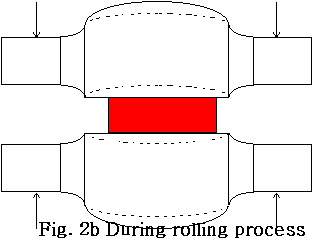| 3 편 소 성 가 공 |
|---|
|
roll의 변형
|
|
As a consequence of the high forces employed, the work rolls bend during the rolling process. To compensate for the bending and thermal expansion, work rolls are usually ground to a convex or concave camber, which is sinusoidal in shape (Fig. 1). Due to roll wear, the rolls need to be periodically reground after a specified duty cycle (which is normally in the order of four hours). Because there is no suitable process model for a complete mill train, the problem is to find suitable work roll profiles - for each rolling programme - capable of producing strip-flatness to the specified tolerances.
 Fig. 1 Roll deformation Fig. 2 shows how the initially ground camber can ideally compensate for the effects of bending and expansion.

 |